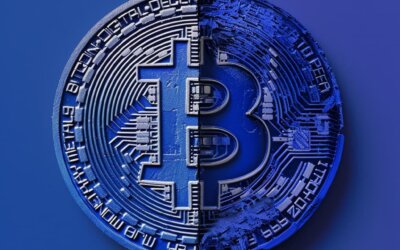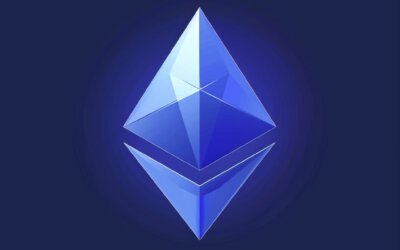An In-Depth Look At Cardano’s Governance Model

Key Takeaways:
- Cardano’s governance model is designed to give power to all and marginalize none. This true democracy is based on community-defined governance and utilizes consensus to drive progress.
- Voltaire is a vital component of Cardano’s decentralization plan, with a focus on redistributing control and funding proposals through Cardano Improvement Proposals (CIPs) and Funding Proposals (FPs).
- The voting mechanism within Cardano’s governance model ensures stakeholder participation in the decision-making process, allowing for voting on both funding proposals and Cardano Improvement Proposals (CIPs) for smoother and more efficient governance.
Introduction
Cardano’s Governance Model – An In-Depth Analysis
Examining the intricacies of Cardano’s governance model, one can gain valuable insights into this cutting-edge cryptocurrency. Cardano’s governance offers a unique blend of decentralized and centralized elements, providing a robust framework for decision-making. With its focus on transparency, scalability, and sustainability, Cardano is clearly at the forefront of blockchain technology and governance.
The Cardano governance model comprises various stakeholders, including developers, academics, entrepreneurs, and end-users. These diverse groups collaborate through a transparent voting process, contributing to the overall stability and growth of the platform. Moreover, Cardano’s innovative treasury system ensures that funds are allocated fairly and democratically, based on community input and needs.
In particular, Cardano’s consensus protocol, Ouroboros, is noteworthy for its scientific rigor and mathematical foundations. Developed by a team of renowned academics, Ouroboros provides an added layer of security and integrity to the blockchain. Furthermore, Cardano’s focus on interoperability and sustainability ensures that it remains a viable option for years to come.
According to a recent report by Coindesk, Cardano’s Ouroboros protocol has been certified by the International Organization for Standardization (ISO) for its “outstanding approach to security.” This designation adds to the growing body of evidence highlighting the robustness and transparency of Cardano’s governance model.
Cardano’s Governance Model
When it comes to cryptocurrency governance, one name that stands out is Cardano. The Cardano project is unique in its approach to governance, as it aims to create a democratic system that marginalizes none and gives power to all. This subverts the traditional model where only the wealthiest and most influential stakeholders have a say in the system’s governance. In this section, we will take an in-depth look at Cardano’s governance model, exploring the need for such a system, and how the model enables true democracy.
The Need for a Model that Marginalizes None and Gives Power to All
Cardano’s governance model aims to eliminate marginalization and empower all participants. A true democracy is achieved by providing power to all stakeholders, enabling equal participation in decision-making processes. The need for this model stems from the realization that traditional centralized models tend to exclude certain groups while giving disproportionate power to others. Cardano believes in breaking down these barriers, empowering all stakeholders and facilitating decentralized governance through community-defined models.
Consensus drives progress and treasury funds are utilized carefully in alignment with the community’s wishes. Voltaire plays a pivotal role in redistributing control through decentralization, allowing anyone in the network to initiate a proposal or improvement idea. The voting mechanism allows stakeholder participation, both on funding proposals and Cardano improvement proposals, ensuring true democracy prevails at all times.
Pro Tip: Participate actively in the voting process as it significantly empowers you within the network’s decision-making process and facilitates progress towards a truly decentralized governance ecosystem.
Cardano’s governance model proves that true democracy is possible in a world where power corrupts, but cryptocurrency empowers.
True Democracy through Cardano’s Governance Model
Cardano’s governance model provides true democracy by giving power to all without marginalizing anyone. The community-defined governance model, consensus-driven progress, and use of treasury funds ensure fair representation. Voltaire aims to redistribute control through decentralization and CIPs and FPs provide improvement proposals. Stakeholder participation in decision-making ensures democracy at all levels. True democracy through Cardano’s governance model stands apart as a unique and fair model of governance that allows for full participation in decision-making while ensuring optimal outcomes for everyone involved. Don’t miss out on this opportunity for truly democratic decision-making.
With Cardano’s community-defined governance model, consensus drives progress – it’s like democracy on steroids.
Governance within Cardano
As we continue to explore Cardano’s structure, I find myself intrigued by the Governance within the network. It is fascinating to witness firsthand how Cardano’s community-defined governance model stirs it towards progress through cooperation. I was especially struck by the impact that consensus has in this model, driving the development of exciting new projects within the Cardano ecosystem. Another critical aspect of Cardano’s governance model that caught my attention is the utilization of treasury funds. This sub-section will be looking into all three aspects of governance within Cardano with a focus on the benefits and challenges of this collaborative approach to decision-making in the network.
Community Defined Governance Model
The governance model within Cardano is defined by the community. It ensures that every member has a say in decision-making and promotes transparency while reducing centralized control. The community defined governance model facilitates democratic decision-making where each member has a vote.
Stakeholder participation drives progress on the Cardano network, which is a key component of the community defined governance model. In addition, consensus ensures that decisions reflect the will of all members, promoting true democracy. Treasury funds have been set aside for proposals that further improve the network.
The unique aspect of the community defined governance model is its emphasis on decentralization and equal representation. This approach enables power to be redistributed throughout the network, moving away from the traditionally centralized models seen in other cryptocurrency projects.
Cardano Improvement Proposals (CIPs) and Funding Proposals (FPs) are central to this discussion since they enable community members to suggest improvements to processes or put forward requests for investment. An equitable voting mechanism ensures that representation focuses more on an individual’s stake in the system rather than their level of influence or reputation.
Consensus drives progress in Cardano’s governance model, because when everyone has a say, we can move forward together.
Consensus drives progress
The progress of Cardano is driven by reaching a consensus amongst stakeholders. Consensus among stakeholders results in faster decision-making, decreases resistance, and improves the efficiency of Cardano’s governance model. Consensus builds a unified approach to problem-solving among community members, facilitates better communication and cooperation between participants, and results in greater implementation success. Stakeholders actively engage in discussions that take place through debates and discourse about proposed changes or updates that affect the future of Cardano. Continuous engagement enables stakeholder feedback, promoting creative interactions aimed towards shaping Cardano according to the needs and wishes of its users.
Within Cardano’s Governance Model, consensus serves as a key motivator for its growth. Every member’s contribution holds significant importance towards making decisions collectively without neglecting anyone’s voice or thoughts. Collectively reached agreements ensure that all members have equal power in decision making, a process undertaken through democratic principles and values that drive accountability to enhance legitimacy.
Consensus drives progress by facilitating positive change and development within the community while addressing concerns identified by its members. When issues arise requiring immediate attention, such as critical security vulnerabilities or potential network performance problems, solutions are reached within short periods because there is consensus on their severity. Consensus also ensures that resources are allocated efficiently to ensure maximum productivity with minimum wastage.
Cardano has grown into a multi-billion dollar blockchain project due to its ability to reach consensus peacefully. Its brand serves as an example of how communities can work collectively together towards advancing ventures despite their varying opinions on different subjects. The accrual methodologies used within these projects served cohesively not only in finalizing product designs, but also in building trust amongst all stakeholders for future collaborations. Through this approach alone can prosperity emerge from even seemingly impossible scenarios with sturdy foundations laid for future growth progression plans around innovation where it matters most: usability.
Cardano’s Treasury Funds: Funding the Future, One ADA at a Time.
Use of Treasury Funds
Cardano’s Governance Model includes the distribution of treasury funds, contributing to the development of the network and giving stakeholders a sense of involvement. The treasury funds allocated for investment depend on the proposals and their related costs that are submitted by the members of this model.
Through community-defined governance, Cardano tries to avoid marginalizing its members and gives stakeholders involvement by allowing them voting rights. Consensus plays an integral role in funding or development proposals through a mechanism that allows transparency in decision making.
Furthermore, Cardano’s Voltaire is essentially designed to further decentralize control over its Treasury Funds by eliminating centralization risks, enhancing censorship resistance and encouraging participation in the network. The primary purpose behind designing Voltaire is allowing every stakeholder’s voice to be heard without bias.
In reality, it was observed that through this model, only a small number of stakeholders benefited from these funds due to inadequate communication skills or lack of knowledge about submitting funding proposals. As a result, Cardano came up with Funding Proposals (FPs) and Cardano Improvement Proposals(CIPs), regulated by specific processes within which developers will have access to solid documentation or templates currently helping them plan their funding bid more potently than ever before.
Cardano’s Voltaire brings democracy to crypto and decentralization to the masses.
Voltaire and Decentralization
As I delved deeper into Cardano’s governance model, I was particularly intrigued by the concept of decentralization and how it relates to Voltaire. A key theme that emerged was that of redistribution of control, which the Cardano community believes can be achieved through greater decentralization. To that end, the purpose of Voltaire is to promote and facilitate decentralized decision-making processes, bringing power back to the hands of the community.
I also learned that the Cardano Improvement Proposals (CIPs) and Funding Proposals (FPs) are essential tools for achieving this decentralization, as they enable the community to propose and vote on changes to the network.
Redistribution of Control through Decentralization
Cardano’s governance model seeks to redistribute control through decentralization by prioritizing stakeholder autonomy and participation. This approach is aimed at ensuring true democratic representation and decision-making, which marginalizes no one while giving power to all. Additionally, the Voltaire phase of Cardano’s development is designed to facilitate the distribution and decentralization of control, with its main purpose being to enhance community-driven decision-making processes that move the network forward.
This bottom-up governance structure distributes control proportionally to stakeholders based on their stake in the network, which promotes accountability and encourages greater participation in decision-making processes. Through this process, Cardano seeks to ensure that governance becomes a shared responsibility among all stakeholders rather than concentrated power.
With Voltaire, Cardano shifts the power to the people, giving them a say in shaping the network’s future.
Purpose of Voltaire
Voltaire serves the purpose of redistributing control through decentralization in Cardano’s governance model. Through this, Cardano intends to promote a genuine democratic process where all stakeholders have equal power to make decisions that impact the network.
With Voltaire, Cardano allows for funding proposals (FPs) and Cardano Improvement Proposals (CIPs) to be created by the community, ensuring that each stakeholder’s priorities are represented in decision-making. Additionally, Voltaire enables stakeholders to participate in voting mechanisms that give them a say in which proposals receive funding and which CIPs get implemented.
The purpose of Voltaire is not limited to merely enabling democratic participation but also ensures fairness and transparency in decision-making processes within the network. By allowing all members to have equal power and providing mechanisms that enable their voices to be heard, Voltaire promotes an atmosphere of inclusivity that represents the interests of all members.
History indicates that decentralized networks face challenges with achieving effective governance mechanisms due to centralization of power. With Voltaire in place, Cardano proactively addresses this concern by providing members with meaningful ways they can contribute towards decision-making effectively.
Proposing positive change in Cardano is as easy as saying CIP-FP!
Cardano Improvement Proposals and Funding Proposals
Cardano’s unique governance model empowers its community members to propose and fund the development of Cardano Improvement Proposals (CIPs) and Funding Proposals (FPs). The proposal process involves a stakeholder vote, ensuring that all proposals align with the community’s goals.
Below is a table outlining the key features of CIPs and FPs within Cardano’s Governance Model:
| Proposal Type | Purpose |
|---|---|
| Cardano Improvement Proposal | Propose changes to Cardano’s codebase or core architecture |
| Funding Proposal | Request funding for projects aimed at improving Cardano’s ecosystem |
Community members can create proposals using Catalyst, a voting mechanism designed to democratize funding allocation decisions within Cardano. Voltaire facilitates this process by decentralizing the network, redistributing control among stakeholders, and promoting censorship-resistant governance.
While previous blockchain governance models have been largely focused on developer-heavy decision-making processes, Cardano’s model shifts power to its community members while allowing developers to execute project plans. This approach ensures that no single entity controls the network and promotes transparency in decision-making.
Cardano’s governance model ensures that proposals and processes are handled with transparency and efficiency.
Proposals and Processes within Cardano’s Governance Model
When it comes to Cardano’s Governance Model, proposals and processes form the backbone of the decision-making system. It’s crucial to understand the different types of proposals and processes to understand how the system works. I’ll be discussing two of them – Funding Proposal (FP) and Cardano Improvement Proposal (CIP), which play a significant role in shaping the direction of Cardano’s development. These proposals and processes serve as a way to introduce new ideas, changes, and improvements to the Cardano blockchain, making it a dynamic and evolving ecosystem.
Funding Proposal
A ‘Funding Proposal (FP)’ is a crucial aspect of Cardano’s governance model as it serves as a means for community members to request funds from the network’s treasury to finance various projects. These proposals can be submitted by anyone, including individuals, organizations, and entities, and must undergo a comprehensive evaluation process before being approved or rejected.
Once submitted, Funding Proposals are assessed based on their viability, relevance, and potential impact on the Cardano ecosystem. The evaluation is done by a dedicated team that considers the proposal’s technical feasibility, its alignment with Cardano’s mission and principles, its scalability potential, and its budgetary requirements. After thorough scrutiny, an FP may either be approved or declined depending on whether it meets the criteria set out in the proposal review process.
Unique details about FPs within the governance model include their funding cap for specific categories like research & development ($3M) or commercial partnerships ($1.5M). This aids in ensuring that no single project eats up all of the community funds – one of several checks-and-balances designed into the system.
In terms of suggestions related to improving Funding Proposals within the governance model, introducing checkpoints where proposers need to provide regular key performance indicators would increase transparency and accountability in the proposal implementation phase. Incorporating external professionals in addition to internal committee members could also further strengthen evaluation processes through increased diversity of thought while still respecting stakeholder interests and perspectives.
Cardano Improvement Proposal: Because progress isn’t just for the privileged few.
Cardano Improvement Proposal
CIPs define technical structures, modular components or libraries, new features, optimisation strategies, among others that enhance or enrich the ecosystem. A rigorous review approach by technical experts ensures proposals’ accuracy before initiating its implementation. Once approved by stakeholders’ democratic process through vote casting via reward percentage weightage proportionally to their tokens held, changes get incorporated in protocol upgrade releases.
It is worth noting that funds are allocated depending on proposals’ priority list compared with budgets assigned in Cardano Treasury Fund management in regards to proposed budgets requirements set by relevant committees under Voltaire governance.
Cardano Improvement Proposal (CIP) works towards decentralization of power distribution structures leveraging community-driven improvement ideas within Cardano governance model.
According to ‘An In-Depth Look at Cardano’s Governance Model’, 79 proposals have either been fully or partially implemented out of over 130 submitted to date since Shelley launched last year.
Get ready to play democracy simulator with Cardano’s voting mechanism.
Voting Mechanism
As a blockchain enthusiast, I’ve always been fascinated with the inner workings of different blockchain platforms. Cardano’s governance model is one that has particularly piqued my interest, especially their approach to voting. In this part of the article, I’ll be diving deeper into Cardano’s voting mechanism and exploring how it works.
We’ll take a look at how stakeholders participate in the decision-making process of the network, as well as how voting works when it comes to funding proposals and improvement proposals. As we delve into Cardano’s voting mechanism, we’ll uncover how it fosters a thriving and interconnected community, which is essential in the world of blockchain technology.
Stakeholder Participation in the Network’s Decision-making Process
In Cardano’s governance model, stakeholders actively participate in the network’s decision-making process. This ensures that all members have their say and that decisions are not made by a central authority alone.
To achieve stakeholder participation, Cardano’s governance model incorporates voting mechanisms for both funding proposals and Cardano improvement proposals. These mechanisms allow stakeholders to express their preferences and guide the direction of Cardano’s development. Through participation in activities such as staking, members can increase their voting power in proportion to their contribution to the network.
Stakeholder participation is vital because it ensures that decisions reflect the needs and priorities of those that use the network. In addition, stakeholder participation helps ensure transparency and accountability through increased responsiveness to feedback from users. Iterative impact also allows for continuous upgrades with progress measured through monitoring internal metrics.
Moreover, stakeholder participation in Cardano’s governance reinforces decentralization ideals that serve to protect user funds against abuse and theft due to committed traps intentionally instituted by some providers. By participating actively on these platforms, users feel more involved with financial systems shaping their lives while exercising distributed consensus mechanisms which limit the possibility of a central body making arbitrary decisions.
Taking part in Cardano’s voting processes means members believe in the value proposition of Cardano which creates an extra loyalty-bond where much enthusiasm drives behind community-led resource allocation systems strengthening adhesion between builders and consumers leading towards usage-growing paces and expectedly smoother price appreciation over time as further protocols are implemented improving scalability while keeping high security standards making this coin one of today’s most prospective investments compared with other cryptocurrencies.
The stakeholder participation mechanism encourages a shared purpose between development teams and investors who share common goals driving towards a stronger ecosystem: maximized profitability coupled with minimized risk provides blueprints for innovation management and general operations enhancing functionality while ensuring proper distribution of resources among community members working toward a common goal: efficiency-cum-decentralization-to-improve overall sustainability.
Vote with your stake, not with your heart – Cardano’s funding proposal process keeps emotions in check.
Voting on Funding Proposals
In regards to deciding on the allocation of funds, the Cardano governance model implements a voting mechanism called ‘Participatory Budgeting’ that enables stakeholders to democratically register and endorse Funded Proposals.
- Stakeholders propose projects that require funding via a Funding Proposal.
- Once a proposal is submitted, it is reviewed by the community and regulatory bodies to ensure compliance.
- The proposal then moves to a voting round, where it is evaluated based on predetermined criteria such as feasibility or viability.
- Each Ada coin held equals one vote, giving each stakeholder an equal say in decision-making.
- After the voting period ends, if approved, funds will be released for use in the project.
This Participatory Budgeting system ensures transparency and fairness by allowing all members to have their voices heard when it comes to determining funding allocation. In addition, this system eliminates potential political influence since everybody has an equal say.
It’s important to note that once a proposal meets the criteria required for submission as defined by Cardano Improvement proposals (CIP), it can be submitted after voting rounds commence and be eligible for promotion into funding rounds.
Lastly, there have been multiple success stories with approved Voting on Funding Proposals policies using Cardano’s governance model. One particular case includes “Dandelion”, which focused on creating a more decentralized communication protocol utilizing blockchain technology. The Dandelion FP was successfully approved and implemented by relevant authorities because of its promising evaluations and successful Participatory Budgeting approval process.
Vote for progress with Cardano’s improvement proposals, because change is the only constant in blockchain technology.
Voting on Cardano Improvement Proposals
The decision-making process in submitting and approving Cardano improvement proposals involves a unique form of voting by the stakeholders, which is vital to promote sustainable development on the network. Here’s what you need to know about voting on Cardano Improvement Proposals:
- Stakeholders participate in the voting process to decide whether or not an improvement proposal should be approved.
- The objective of the voting system is to promote transparent decisions that benefit all stakeholders and enhance network growth sustainably.
- After submitting a specific improvement proposal, the discussion period allows for constructive criticism, which helps refine the proposed solution.
- Following discussions, proponents must submit a funding request attached to their solution. This proposal undergoes technical review by trusted members of the community before being put up for stakeholder vote.
- During stakeholder voting, it’s vital to note that each holder’s weighted vote rather than a one-vote-per-person approach defines decision-making percentages.
- Once approved by the majority of voters above threshold, stakeholders must execute the solution through network software updates.
It’s essential to understand that stakeholders’ participation in governance enables transparent and democratic decision making across Cardano while promoting sustainable growth.
Conclusion
Based on the in-depth analysis of Cardano’s governance model, it is evident that the system is designed to promote decentralized decision-making and avoid centralization of control. The model allows the community to have a voice in decision-making, reducing the risk of a single entity controlling the network. Furthermore, the system is designed to be transparent and secure, ensuring that all transactions and decisions are logged and available for public scrutiny. Cardano’s unique governance model is an example of how a decentralized system can operate efficiently while promoting transparency, security, and community participation.
It is worth mentioning that Cardano’s governance model plays a critical role in the network’s future success, as it promotes a high level of decentralization and transparency within the network. Therefore, it is crucial for all stakeholders involved to play an active role in the decision-making process and ensure that the network remains decentralized and secure. With the adoption of Cardano’s governance model, decentralized finance platforms, and other decentralized applications can leverage the technology’s transparency and security to offer users a clear and safe way to engage in financial transactions.
Stakeholders must consider and weigh the pros and cons of decentralized systems given that decentralized finance platforms’ adoption will increase. It is essential that they avoid depending on centralized systems that can be hacked and manipulated. Being an active participant in network governance and decision-making is key to ensuring Cardano’s success. Don’t miss out on the opportunity to be part of a decentralized system that promotes transparency and decentralized decision-making, leading to its success.
Five Facts About An In-Depth Look at Cardano’s Governance Model:
- ✅ Cardano’s governance model is based on true democracy where individuals are incentivized to play a role and votes are immutably recorded. (Source: Team Research)
- ✅ Token holders have the power to decide the future of a platform and dictate the use of Cardano’s treasury funds. (Source: Team Research)
- ✅ Voltaire is an era within Cardano that enables community decision making on software updates, technical improvements, and funding proposals. (Source: Team Research)
- ✅ Cardano Improvement Proposals (CIPs) and Funding Proposals (FPs) allow the community to have a say in protocol-level changes and funding for ecosystem development. (Source: Team Research)
- ✅ Cardano’s governance model is a blueprint for change that can be applied to any application, system, or society to redistribute power and improve lives. (Source: Team Research)
FAQs about An In-Depth Look At Cardano’s Governance Model
What is Cardano’s governance model based on?
Cardano’s governance model is based on true democracy and consensus, where individuals are incentivized to play a role, and votes are immutably recorded. The community decides the future of the platform and dictates the use of Cardano’s treasury funds.
How does Cardano’s governance model encourage creative solutions?
Disagreements in Cardano’s governance model drive creative solutions to problems, and consensus must drive progress. The model is designed to marginalize none and give power to all, creating a positive future for everyone.
What incentives do token holders have to participate in Cardano’s governance model?
Token holders are incentivized to participate in Cardano’s governance model as every token holder holds a stake in the network and has the right to vote on proposals to develop or upgrade the blockchain and ecosystem. The most successful proposals receive funds from the treasury, in accordance with the amount specified within the proposal.
How are technical improvements and funding decisions made through Cardano’s governance model?
Technical improvements and funding decisions are made through Cardano’s governance model by submitting either a Funding Proposal (FP) or a Cardano Improvement Proposal (CIP). FPs are proposals submitted by members of the community to enhance the ecosystem, and CIPs are structured proposals touching the Cardano Ecosystem.
What are the experiments that will be carried out during the Voltaire era of Cardano?
The Voltaire era of Cardano will play host to a series of experiments, including discussions on decentralised governance, the dynamics of democracy and consent, and the evolution of Voltaire from research to reality. The language of decentralization will also be explored through shared decision making.
How are FPs and CIPs voted on in Cardano’s governance model?
Funding Proposals (FPs) are voted on using a dedicated voting app, currently being developed and will be available on iOS and Android. Cardano Improvement Proposals (CIPs) are voted on via the CIP GitHub repository located in the Cardano Foundation, which is publicly visible to the community for discussion.
Where to buy cryptocurrency in Canada and US?
Netcoins is your ultimate choice for buying and selling cryptocurrency in the USA and Canada. Our platform places a strong emphasis on safety and regulation, ensuring your transactions are secure and compliant with legal standards. Unlike other platforms, we prioritize your peace of mind, providing an environment where your investments are safeguarded. Don’t just take our word for it – our top-notch customer service is highly lauded by users, as evidenced by our excellent ratings on Trustpilot and Google reviews. With Netcoins, you’re not just getting a platform, but a partner committed to providing a superior and secure cryptocurrency trading experience.
Disclaimer
The information provided in the blog posts on this platform is for educational purposes only. It is not intended to be financial advice or a recommendation to buy, sell, or hold any cryptocurrency. Always do your own research and consult with a professional financial advisor before making any investment decisions.
Cryptocurrency investments carry a high degree of risk, including the risk of total loss. The blog posts on this platform are not investment advice and do not guarantee any returns. Any action you take based on the information on our platform is strictly at your own risk.
The content of our blog posts reflects the authors’ opinions based on their personal experiences and research. However, the rapidly changing and volatile nature of the cryptocurrency market means that the information and opinions presented may quickly become outdated or irrelevant. Always verify the current state of the market before making any decisions.
Related Posts
What is EtherFi? A DeFi Approach to Ethereum Staking
What is EtherFi? A DeFi...
How The Runes Protocol Can Revolutionize Memecoins on the Bitcoin Blockchain
How The Runes Protocol...
Ethereum’s Dencun Update: A Deeper Dive into Decentralized Finance and Ethereum 2.0
Ethereum's Dencun...
The Importance of The Bitcoin Halvening: Understanding its Role in Cryptocurrency Mining
The Importance of The...
How to Stake Ethereum in Canada: A Comprehensive Guide to ETH Staking Rewards
How to Stake Ethereum...
ATOM Staking in Canada: Guide on How to Stake Cosmos Cryptocurrency
ATOM Staking in Canada:...
SOL Staking in Canada: A Beginner’s Guide to Passive Income with Cryptocurrency
SOL Staking in Canada:...
Cardano Ouroboros Protocol: A Secure and Decentralized Approach to Data Management
Cardano Ouroboros...
Can Canadians Still Use CoinEx Crypto Exchange in 2024?
Can Canadians Still Use...








